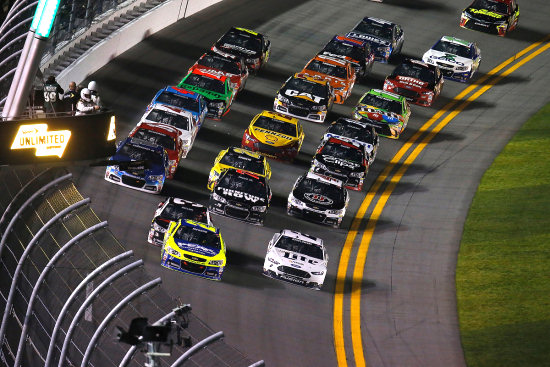The Way It Is/ Swimming against the turbo tideby Gordon Kirby |
 Turbocharging has been an essential part of big-time automobile racing for almost fifty years. Turbo engines arrived as a powerful force in Indy car racing in the late nineteen-sixties and stonking turbocharged motors defined the Indy cars of the seventies, eighties and nineties.
Turbocharging has been an essential part of big-time automobile racing for almost fifty years. Turbo engines arrived as a powerful force in Indy car racing in the late nineteen-sixties and stonking turbocharged motors defined the Indy cars of the seventies, eighties and nineties.
So too in American sports car racing. In 1972 and '73 Penske's turbo Porsche 917/10s and 917/30s dominated the last years of the Can-Am which was followed by a great era of IMSA Camel GT racing defined by Porsche's superb customer turbo 962s. And of course, turbocharging arrived in Formula 1 in the late seventies, first with Renault, then Ferrari, BMW, TAG/Porsche and Honda. Turbos eventually pushed aside the naturally-aspirated Cosworth brigade and turbocharged cars won the World Championship from 1983-'88. Turbos were banned in F1 in 1989 but were re-introduced last year with the latest turbo V6/energy recovery system formula. Both the FIA and the IRL swam against the turbo river for a few years but F1 and Indy car racing have returned in recent years to very different turbo engine formulas. And turbo engines are everywhere in sports car and open-wheel racing around the world.  © Mike Levitt/LAT USA Also, Edmunds.com reports that 49.7 percent of the 350 car and truck models currently sold in the USA offer turbo engines, up from 30 percent in 2010. And Chevrolet, Ford and Hyundai have stopped supplying V6 engines for their most popular family sedans--the Malibu, Fusion and Sonata--in favor of turbo four cylinders. No fewer than 67 percent of cars sold in Europe are turbocharged, including almost all diesels, and at the high-end of the world market each of Mercedes-Benz, Ferrari, Porsche, BMW, Aston-Martin and Cadillac are building and selling turbo-powered supercars. And of course starting this year Ford offers optional EcoBoost turbo engines for every Ford and Lincoln car, SUV and light pick-up truck. Ford manufactures seven EcoBoost engines from the little three-cylinder Fiesta motor through the new Mustang's turbo 2.3 liter four to a V-6 for the redesigned F-150 pick-up. More than half of the immensely popular F series buyers are selecting EcoBoost engines. All of this is bad news for NASCAR. For many years I've joked with people in NASCAR's garage area that one day in the distant future NASCAR will have to find a way to renounce its antique rocker-arm V8s in favor of small capacity turbos. I always add it's a change none of us can ever imagine happening, but the facts of the market appear to make that day of change not only inevitable but something that will have to happen sooner rather than later. The entire NASCAR industry is based on rocker arm V8s and tube frame chassis but as I suggested last week the time is coming for NASCAR to start thinking about adopting more modern chassis. It's also clearer than ever that turbo engines are taking over America's car and truck market. Introducing small capacity turbo engines and carbon composite chassis to NASCAR would create a disruption unlike anything American stock car racing has ever witnessed. It would strike at the very roots of the sport but if NASCAR is to continue to thrive ten and twenty years from now the folks from Daytona Beach and Charlotte will have to find a way to grapple with this almighty challenge. Can NASCAR cope with such massive change? |
|
Auto Racing ~ Gordon Kirby
Copyright ~ All Rights Reserved |
